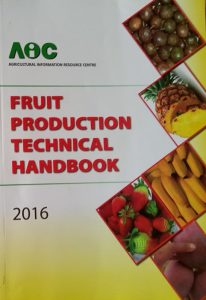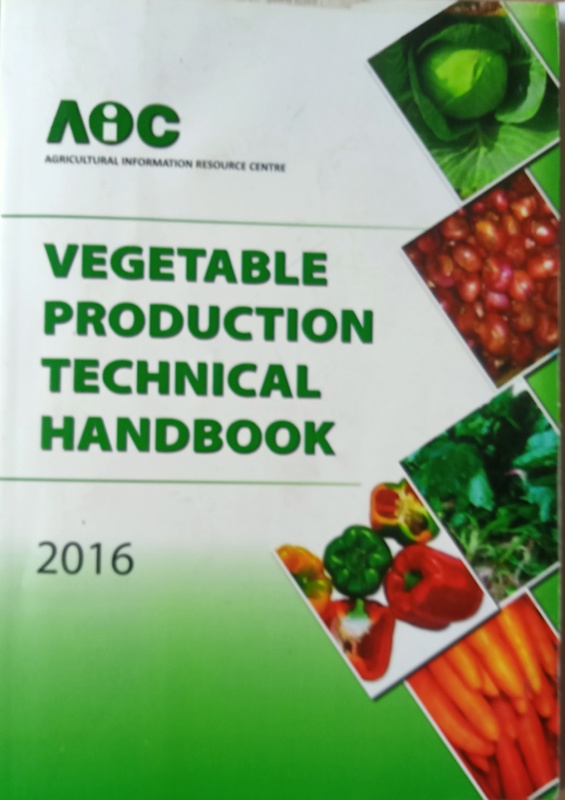By Ogova Ondego
Published August 25, 2021
Fruit Production Technical Handbook is a useful reference manual for fruit farmers.
Published by Agriculture Information Resource Centre in Nairobi in 2016, t
RELATED: Why that Tomato Costs You an Arm and a Leg
“The smallholder farmer,” the book says, ” should address the basic aspects of ‘economics of production with due regard to when to grow, for whom and where to sell’.”
Among the 20 fruits covered in the manual are apples, avocado, banana, grapes, guava, macadamia, mango, passion, pawpaw, plums, pears, strawberry, tamarillo and water melon.
RELATED: Tribute to Kenyan Humour Legend
 “The production technologies discussed in this handbook aim at boosting the fruit production sector and enhancing the rate of return on investment,” writes Willy Bett, Minister for Agriculture, Livestock and Fisheries in the introduction to the reference book that was published in 2016. “Through research there has been introduction of improved varieties with resistance or tolerance to a number of economically important diseases and pests, which have been incorporated in this book. It also draws lessons from experiences of producers, extension providers and other actors in the value chain.”
“The production technologies discussed in this handbook aim at boosting the fruit production sector and enhancing the rate of return on investment,” writes Willy Bett, Minister for Agriculture, Livestock and Fisheries in the introduction to the reference book that was published in 2016. “Through research there has been introduction of improved varieties with resistance or tolerance to a number of economically important diseases and pests, which have been incorporated in this book. It also draws lessons from experiences of producers, extension providers and other actors in the value chain.”
The Government of Kenya says it is addressing the various challenges–limited market opportunities, poor production, and post-harvest handling–through Fruit Production Technical Handbook that also provides information on the nutritional value and uses of 20 fruit crops, agro-ecological suitability of growing areas, marketing outlets and market dynamics, production techniques and crop protection, and post-harvest handling … for selected fruits’.
RELATED: Popular Gospel Musician Dies in Road Accident
 Horticulture, i.e the production of fruits, vegetables, cut flowers, edible mushrooms, spices and herbs, is a specialised high value form of agriculture that calls for equally specialised technology to maintain quality after harvesting.
Horticulture, i.e the production of fruits, vegetables, cut flowers, edible mushrooms, spices and herbs, is a specialised high value form of agriculture that calls for equally specialised technology to maintain quality after harvesting.
Planting calendar is key to successful horticulture. The farmer is advised to be conversant with the demand and supply situations for horticultural produce throughout the year, targeting market outlets during the dry period when the prices are likely to be high and staggering the production period for continuous supply as per the market requirements.
RELATED: Celebrating Food Security, Music and Village of Stone Carvers
 The farmer is likely to draw dividends from the 21 pages of three annexes of recommended and banned chemicals in farming, and illustrations of gross margins for selected fruits presented in this manual that has been prepared by crop science scientists and specialists.
The farmer is likely to draw dividends from the 21 pages of three annexes of recommended and banned chemicals in farming, and illustrations of gross margins for selected fruits presented in this manual that has been prepared by crop science scientists and specialists.
Though agriculture in general provides food and income to families, it faces many challenges that hinder its full potential.
RELATED: UN-Supported Projects Enhance Food Security and Nutrition





